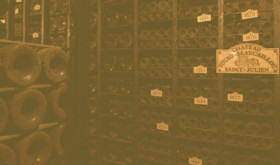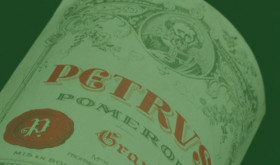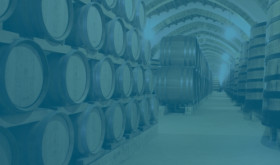
- Nearly 30% of the UK’s high-net-worth (HNW) investors incorporate fine wine into their portfolios.
- They tend to be cautious, but in 2024, investors with balanced risk profiles are increasingly dipping into the world of drinkable assets.
- Since last year, the demographic has shifted a little towards less experienced investors, indicating that new HNWs could be getting involved with fine wine.
Fine wine, historically a passion-driven investment, has predominantly attracted older, seasoned investors interested in both enjoying and preserving their wealth. However, recent trends indicate a shift as younger, less experienced investors in the UK are increasingly drawn to fine wine for different reasons – not least because the fine wine market has become more accessible.
Fine wine allocations in investment portfolios
In 2024, nearly 30% of the UK’s high-net-worth (HNW) investors incorporate fine wine into their portfolios.
66% are allocating up to 10% of their portfolio to fine wine, with the remaining 34% reserving over 11%. In 2024, 2% are allocating over a third of their portfolio to fine wine. This trend reveals a more polarising wealth distribution, considering that last year just half of wealth managers kept fine wine allocations under 10%, but none invested over 30% of their wealth in fine wine.
Investors’ risk profiles
Fine wine investors tend to be the cautious type. According to our 2024 wealth management survey, 88% of respondents incorporate fine wine into portfolios for investors with a ‘somewhat cautious’ or ‘extremely cautious’ risk tolerance. As fine wine can help provide stability, it can have a calming influence on overall performance.
Cautious investment portfolios also generally contain a greater proportion of bonds and cash-like assets. The inflation-resistance of wine can help to buffer out some of the risks this can present over the long term.
The remaining 12% tend to use wine for balanced portfolios (compared to 10% last year). None of the respondents use the asset for clients with higher risk tolerances.
In 2024, around 2% of respondents are using fine wine for ‘somewhat aggressive’ portfolios. As fine wine has historically exhibited strong growth during recessions and periods of high inflation, it could easily be used to diversify high-risk portfolios.
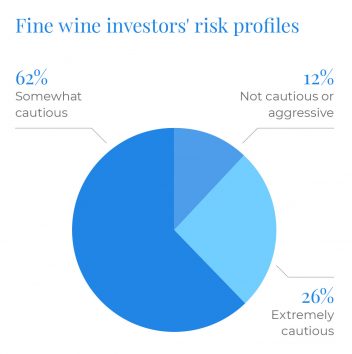
Investment experience
In line with this trend, over the past 12 months, fine wine has started to move beyond the realm of ‘very experienced’ investors. The slow spread towards ‘experienced’ and ‘somewhat experienced’ investors suggests that fine wine is becoming a more mainstream asset.
This move could be prompted by the demand to invest in sustainable and low-carbon assets. As this trend is particularly strong with younger investors, it fits that they could have less experience.
This year, 52% of UK wealth managers rated their investment clients as ‘very experienced’ with fine wine, compared to 62% in 2023. Meanwhile, clients with medium or limited experience grew their fine wine investments.
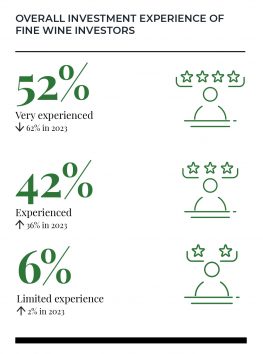
Fine wine has long been perceived as an exclusive, somewhat intimidating investment, traditionally reserved for a privileged few. But as our recent research indicates, attitudes are slowly changing.
For more information on the changing fine wine investors’ demographics, read our exclusive Wealth Report 2024: UK Edition.
WineCap’s independent market analysis showcases the value of portfolio diversification and the stability offered by investing in wine. Speak to one of our wine investment experts and start building your portfolio. Schedule your free consultation today.

